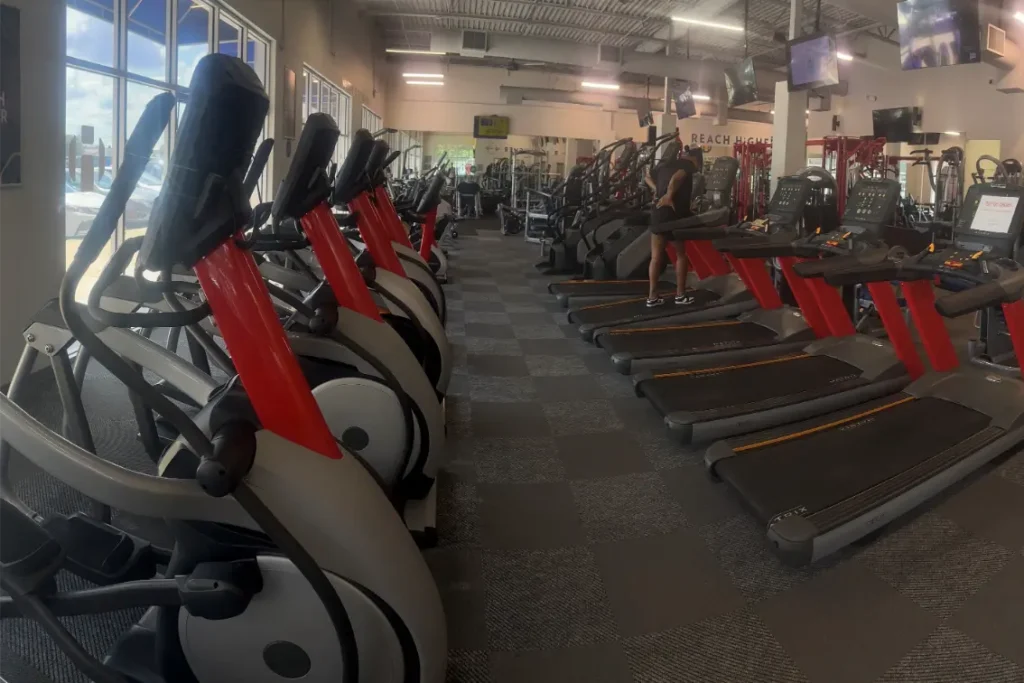In this post, we’ll dive into a head-to-head comparison of walking versus stationary biking, analyzing factors like calorie burn, convenience, impact on the body, and sustainability over the long term. By the end, you’ll have a clear idea of which one could fit best into your routine—or whether a combination of both might be the ultimate weight-loss hack.
Calorie burn comparison
When it comes to calorie burn, both walking and stationary biking can be effective, but the number of calories burned depends largely on intensity, time, and even your body weight.
Walking generally burns fewer calories per hour compared to biking, especially if you’re walking at a leisurely pace. However, by increasing your speed or adding some incline, you can bump up your burn rate significantly. For example, a brisk walk at 4 mph can burn about 200-300 calories per hour for a person weighing around 155 pounds.
Stationary biking, on the other hand, tends to have a bit of an edge in the calorie-burning department, particularly if you’re using moderate to high resistance. With a moderate effort on a stationary bike, the same 155-pound person could burn around 500 calories in an hour. High-intensity biking or interval training can push that number even higher, making it easier to create a calorie deficit.
So, if calorie burn is your main concern, stationary biking might give you a slight advantage, especially if you’re willing to push yourself with intervals or added resistance. But remember, both exercises can be highly effective for weight loss when done consistently and combined with a balanced diet.
You can always upgrade from walking to running on a treadmill. In that case, you should learn the treadmill vs stationary bike comparison.
Convenience and accessibility
Both walking and stationary biking offer some great benefits when it comes to convenience, but the “best” option depends on your lifestyle and personal preferences.
Walking is incredibly accessible—you just need a safe route, comfortable shoes, and you’re good to go. Plus, you can walk almost anywhere: in a park, around your neighborhood, or even at a mall if the weather’s bad. No equipment, no gym membership, no problem. It’s also easy to incorporate walking into your daily life, like choosing to walk instead of driving for short trips.
Stationary biking does require a bike, either at home or at the gym, which may be a hurdle for some. However, if you have a bike at home or a gym membership, biking is super convenient, especially since you can do it indoors and avoid weather issues. Many people find stationary biking easier to fit into a tight schedule since you can watch a show, read a book, or even take a work call while you pedal away.
In terms of pure accessibility, walking is the clear winner. But if you already have a stationary bike, it can be a convenient, time-efficient way to burn calories without even stepping outside.
Impact on joints and body
Both walking and stationary biking are relatively gentle on the joints, which is excellent news for people who want to avoid high-impact exercises like running or jumping.
Walking has a low impact on the joints, especially when done at a moderate pace. For people who are overweight or new to exercise, walking is usually a safe option since it doesn’t put undue stress on the knees or hips. However, long walks or uneven surfaces can sometimes strain the joints, especially for those with pre-existing joint conditions.
Stationary biking is often considered even more joint-friendly. Since biking is a seated activity, it puts minimal pressure on your hips, knees, and ankles. The smooth, circular motion of pedaling allows for low-impact movement, making it ideal for people with arthritis or anyone recovering from injury. The only downside is that if the bike isn’t adjusted correctly, it can cause strain in the knees or lower back over time.
If protecting your joints is a top priority, stationary biking might be a bit easier on the body. But both exercises can work well if you start at a moderate pace and build up gradually.
Weight loss efficiency and overall health benefits
When considering weight loss, the real goal is efficiency—getting the most results with consistent, manageable effort. But weight loss isn’t just about calories; it’s also about the health benefits that keep you feeling good, motivated, and able to sustain your progress.
Walking offers a moderate calorie burn, especially if done at a brisk pace or on an incline. But walking’s real strength lies in its accessibility and mental health benefits. Regular walking improves cardiovascular health, boosts mood by releasing endorphins, and helps lower blood pressure. For those who struggle with stress or have a hard time sticking to high-intensity workouts, walking offers a gentle but steady way to achieve weight loss while enhancing overall well-being.
Stationary biking shines in terms of calorie burn and cardiovascular conditioning. The high-intensity option is perfect for interval training, which is especially effective for fat-burning and boosting metabolism. Biking also supports cardiovascular health, helping to improve heart and lung function over time, which benefits not just weight loss but your entire physical health. Plus, because it’s a seated activity, biking also aids in building lower body strength, particularly in the quads, hamstrings, and calves. Like walking, stationary biking has mental health perks, promoting relaxation and reducing stress.
In short, if you’re looking for maximum calorie burn in a shorter amount of time, stationary biking may be more efficient. But for many people, the ease and consistency of walking make it just as effective in the long run. Both exercises offer meaningful health benefits that support weight loss and overall wellness.
Final thoughts
In the end, it’s about what keeps you motivated and fits naturally into your life. For many, a mix of both walking and stationary biking might be the ultimate approach, allowing variety and flexibility in their weight loss journey. Remember, consistency is key: whatever you enjoy and can stick with will always give you the best results. Pick the method that works for you, and watch as those consistent, small steps add up to meaningful progress!





